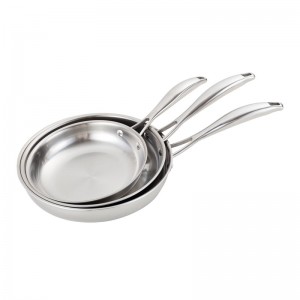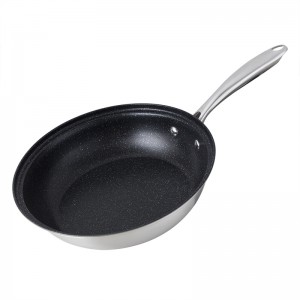A stainless steel pan is your kitchen workhorse. Look for a multi-ply pan with an aluminum or copper core. Aluminum and copper are heat conductors and those materials are then coated in stainless steel to give the pans a nice, non-reactive finish. Like its non-stick sibling, you want a pan with a heavier bottom for maximum, even heat conduction. Thin, light pans are more likely to have hot spots and are easier to dent.

When to Use Stainless Steel Pans
You can cook practically everything in a stainless steel pan. They can be harder to clean, but if you use enough heat and enough fat, most foods will not stick to the pan because they will sear, which creates a crust that will release from the bottom. Foods that require higher heat aren’t the only items you can trust here: acidic foods, metal utensils, and nonstick sprays are also welcome. Additionally, these pans can tolerate much higher heat on the stove and in the oven, which makes them ideal for menu items that need a high sears and an oven finish like steaks, chicken, pork, and braises. You could even use the larger versions as roasters if you were cooking something like a small, whole chicken.
When it comes to cleaning stainless steel pans, you’ll want to wait for the pan to cool before you wash to avoid warping or damaging the pan. We don’t recommend putting stainless steel pans in the dishwasher. When cleaning, if something is a little tougher to remove, a soak will likely get you sorted, but if not, we swear by a good Bar Keepers Friend scrub.
How to Choose the Right Pan for the Job
The main thing to remember when using either of these pans is that they are there to work for you, but in order for that to happen, you have to choose the right one for the dish that you are making. Using the right equipment will not only make the equipment last longer, it will also make you a better cook. So keep the flame down and make some crepes, or turn it up a little and get a dark golden brown sear on your favorite protein or veggie. And finally, hand wash your pans whenever possible.




